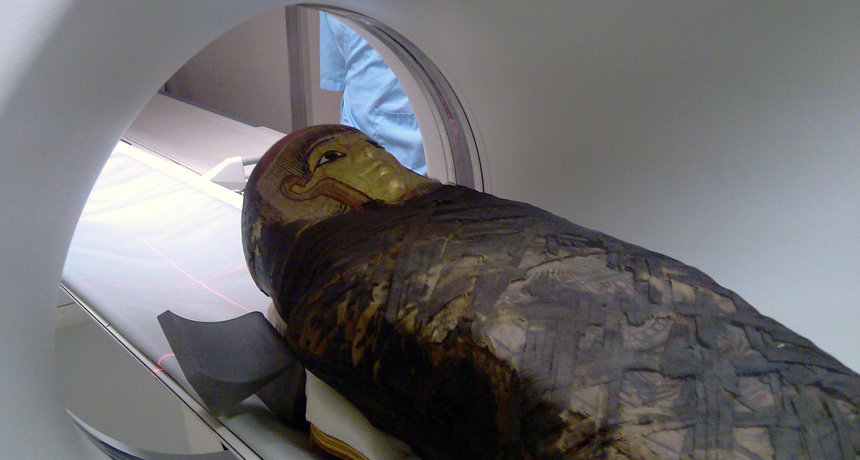HOME
Mummies share their secrets

One afternoon, Ron Beckett, a professor at Quinnipiac University in Hamden, Conn., left his lab, taking some research home with him. The university labs were being remodeled, and security was a question. Carefully assisting his elderly passenger into the back seat, Beckett buckled her in for safety. As the two traveled to Beckett’s home, the passenger sat very still and didn’t make conversation — because she’s a 1,000-year-old Peruvian mummy!
Mummies are alive with information, and scientists like Beckett are helping to unlock what these time travelers have to say. Cutting-edge technology such as CT, or CAT, scans and endoscopes are allowing scientists to see not just what’s underneath the wrappings but also what’s inside a mummy’s body.
Mummies have been discovered all over the world, including Europe, Asia, Africa, Oceania and South America. Most people think of a mummy as a body wrapped in yards and yards of linen. But a mummy doesn’t have to be wrapped. Technically, any preserved body with some hair, skin and muscles is a mummy.
Mummies can be human-made. Ancient Egyptians are probably the most famous mummy makers. They dried out bodies with salts, then removed the internal organs that would decay and placed them in containers called canopic jars. Afterward, the bodies were wrapped in long swaths of linen.
News Source